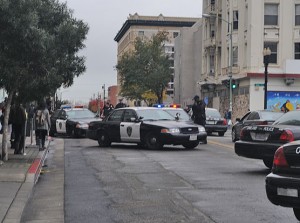After spiking in the 1980s, crime rates in the United States - for both violent and property crimes - fell significantly in the last two decades. In particular, the rate of violent crime (murder, rape, aggravated assault and burglary) by 2012 had dropped to less than half what it was in 1991, according to FBI data (from 758 violent crimes per 100,000 Americans to 387). And although a disproportionately high level of violent crime still occurs in densely populated urban areas, many of America's big cities experienced similar downward trends. That includes the nation's two largest metropolises -- New York and Los Angeles -- both of which had precipitous drops in violent crime.
Ask a room full of criminologists to explain the cause of this decrease and you'll likely get a room full of conflicting answers. From policing strategies and demographic trends to poverty levels and investment in community services, theories abound as to what factors lead to spikes and drops in a city's crime rate. It's a conundrum of particular concern for cities with crime rates that have remained stubbornly high, despite the national downward trend. The chart below shows the 10 cities with the highest violent crime rates in the country, based on 2012 data, as measured by the number of violent crimes per 100,000 population. Figures are taken from the FBI's most recent Uniform Crime Reporting Statistics - and ranked by the site Law Street. The second chart compares the dramatic violent crime reductions in Los Angeles and New York, with the stagnantly high rates in Oakland and Detroit. Note that some but not all of the cities with the highest violent crime rates also shared the dubious distinction of having among the highest murder rates in the country. These included Flint, Detroit, St. Louis, Baltimore, Oakland and Birmingham (the bottom chart lists the top 20 cities). But a number of other cities with some of the nation's highest murder rates, including New Orleans and Jackson, had much lower rates of total violent crime.
One caveat: although the FBI's crime reporting system offers the most definitive set of U.S. crime data, it does present some statistical issues. For one, some police precincts categorize some types of simple assault as a violent crime, while others do not. Additionally, some large cities have broad boundaries that may include safer, suburban areas, thus skewing the overall crime profile of that city, particularly if most of the crime is concentrated in its center. All data in these charts are taken from the FBI's Uniform Crime Reporting Statistics, with rates calculated per 100,000 population.
